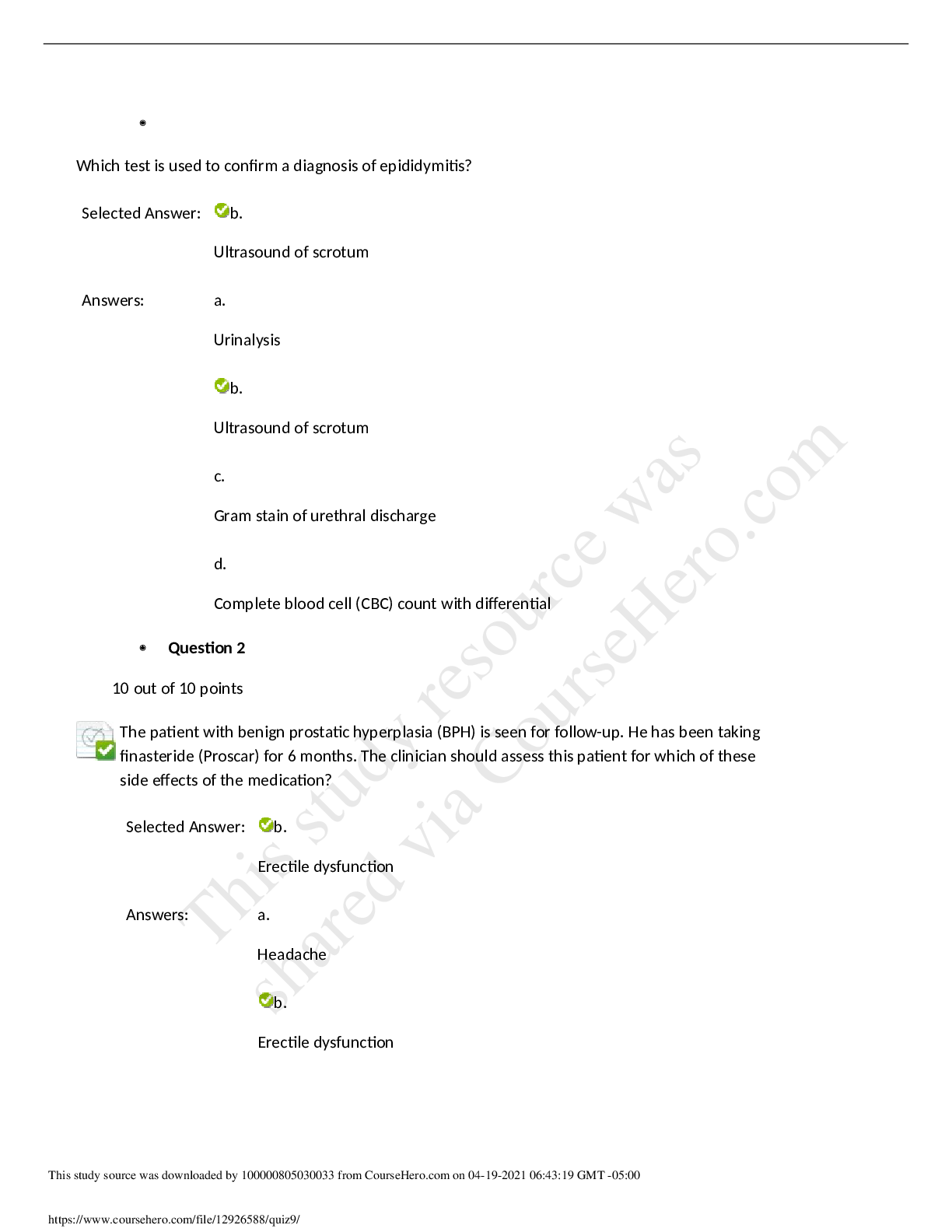Chamberlain College of Nursing NR 283NR 283 ROK Exam 3
Document Content and Description Below
Review of Knowledge (ROK) Course NR 283 Exam 3 Endocrine: Thyroid & Diabetes Mellitus and Musculoskeletal Systems Purpose The Review of Knowledge (ROK) focuses on course outcomes, unit outcomes an... d key concepts to enhance student success on exams. Use this document as a focused guide for study in conjunction with assigned readings, PowerPoint presentations, and other course resources. Supplement this document by outlining your own notes from the textbook chapters and place your expanded more detailed notes in the Student Notes column. This document should NOT be used as a substitute for completing the assigned readings. Key Concepts Chapters Student Notes A Diabetes Mellitus a Types i Type 1 ii Type 2 iii Drug Induced b Etiology i Risk Factors ii Genetic Predisposition iii Sociocultural c Pathophysiologic Process i Body System Effect d Clinical manifestations and complications e Diagnostics Impact of physiologic Changes of Aging page 444 Box Chapter 16 A. Review of thyroid function B. Alterations of thyroid function a. Types POET - ROK Form Revised 1 5.31.16 Atlanta Campus Review of Knowledge i. Hyperthyroidism ( Grave’s disease) ii. Hypothyroidism (Autoimmune thyroiditis) b. Etiology c. Pathophysiologic Process C. Body System Effect D. Clinical manifestations and complications E. Diagnostics 1. Diabetes mellitus (DM) is caused by a lack of insulin production by the beta cells of the pancreas. 2. Diabetes mellitus is usually described as being three types: Type 1 Diabetes or insulin dependent, type 2 diabetes or non-insulin dependent and also gestational diabetes. 3. Type 1 DM develops when the beta cells of the pancreas ceases to produce insulin. This can be caused by pancreatic disease, infections in the pancreas and also genetics. There is also some thought that DM has a component of autoimmune to it. The most common symptoms see in type I are polyphagia(increased appetite), polydipsia(increased thirst) and polyuria (increased urine) with subsequent weight loss. The reasons for these symptoms are because although the person is eating, the glucose is not getting into the cell. Insulin is required to transport the glucose into the cell. When there is an absence of insulin, glucose stays in the blood stream. This causes a change in the osmotic pressure, causing thirst. The somatic cells are not receiving glucose; therefore, they notify the brain to stimulate eating. This type of DM has to be treated with exogenous insulin. 4. Type II DM is caused by a decrease in insulin production or a resistance of the insulin receptors on the cell. This DM can be treated with oral medications. 5. Gestational diabetes is a “temporary” type of diabetes that occurs during pregnancy. Having this condition increases the risk of acquiring diabetes later in life. Treatment of gestational diabetes is done with insulin. 6. A normal serum glucose level is 70 to 100 mg/dL. This level often varies by source and facility. A fasting serum glucose level of > 120 mg/dL is indicative of diabetes. 7. However, currently a blood test that is a better measure of serum glucose is used to determine diabetes. This test is known as a glycosylated hemoglobin or HbA1c. HbA1c refers to the permanent attachment of glucose to hemoglobin molecules. Whatever the glucose level is at the time of the “birth” of the red blood cells stays the same for the life of the blood cells. Thus, this blood test indicates the person’s average serum glucose over the entire life of a red blood cell (approximately 120 days). A diagnosis of diabetic HbA1c is considered > %. However, once diagnosis of diabetes is made, health care providers prefer to have the HbA1c below 6% [Show More]
Last updated: 1 year ago
Preview 1 out of 10 pages
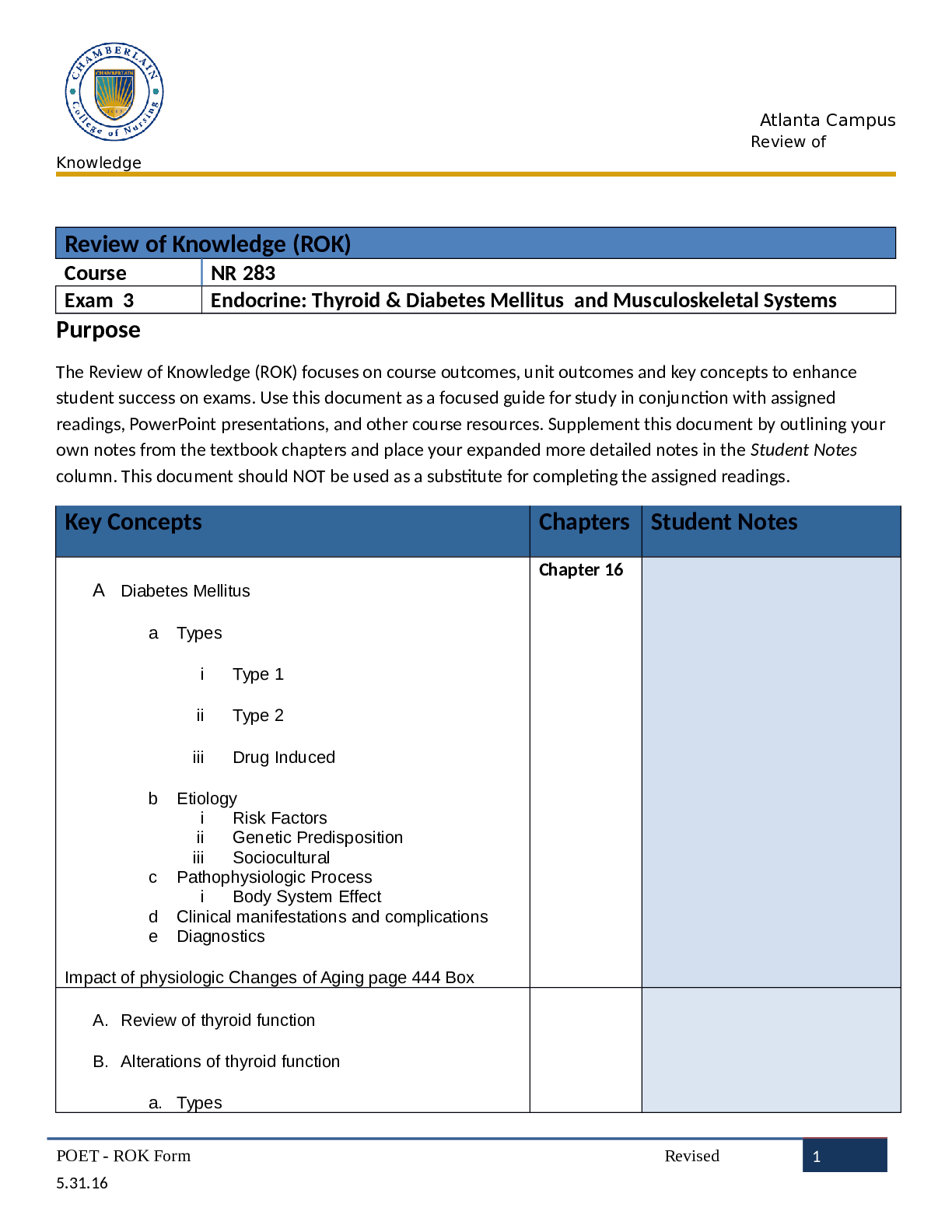
Buy this document to get the full access instantly
Instant Download Access after purchase
Add to cartInstant download
We Accept:

Reviews( 0 )
$7.00
Document information
Connected school, study & course
About the document
Uploaded On
Oct 04, 2021
Number of pages
10
Written in
Additional information
This document has been written for:
Uploaded
Oct 04, 2021
Downloads
0
Views
126

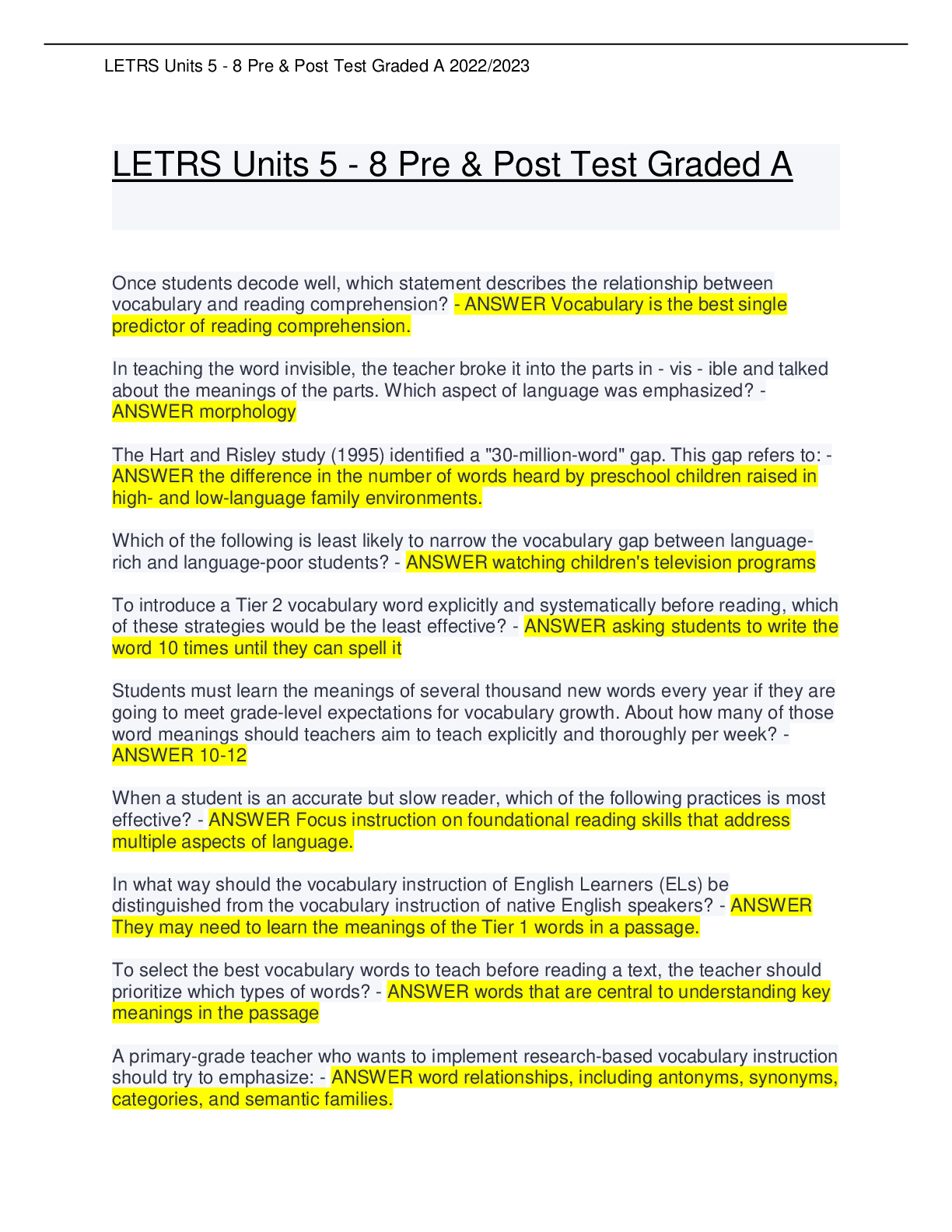





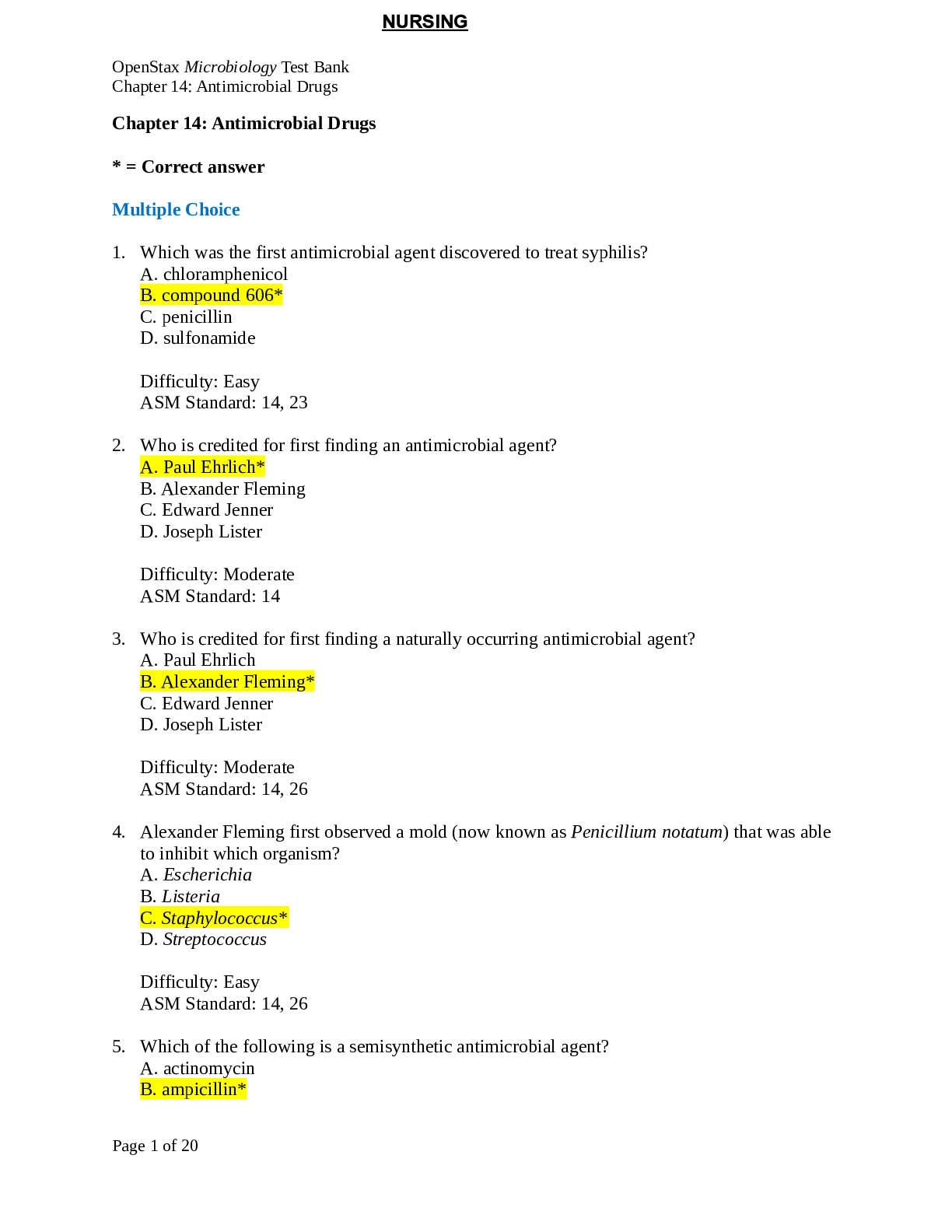
.png)
.png)
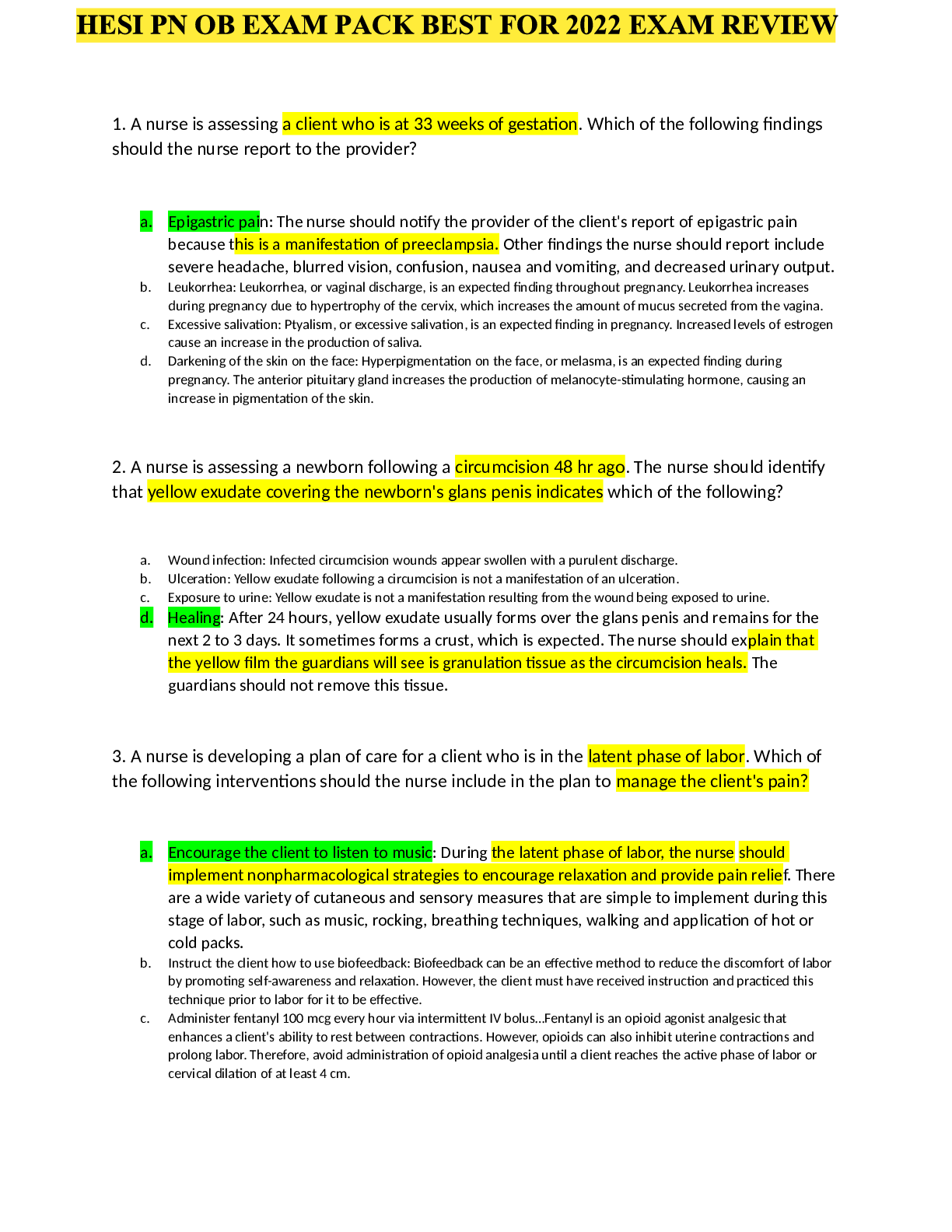

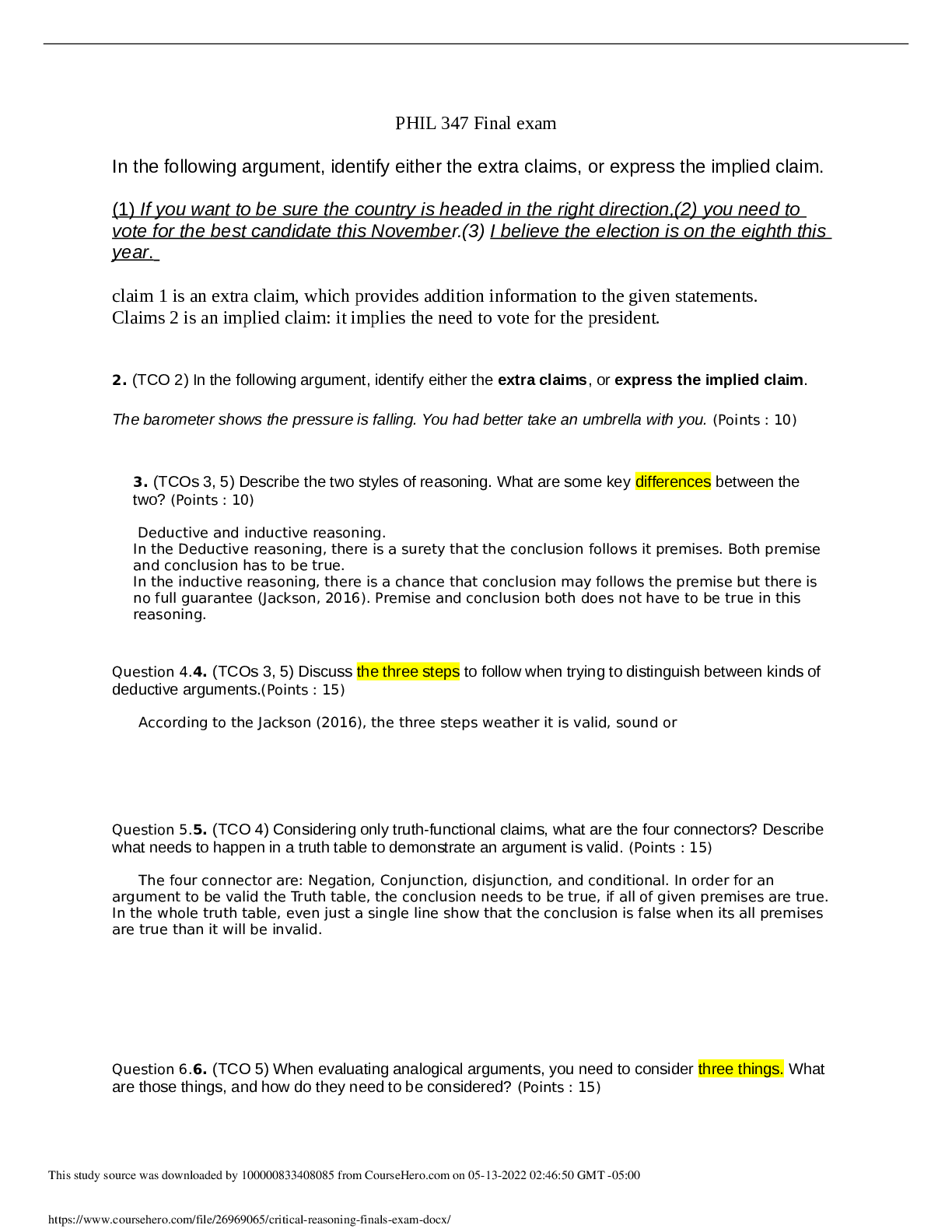
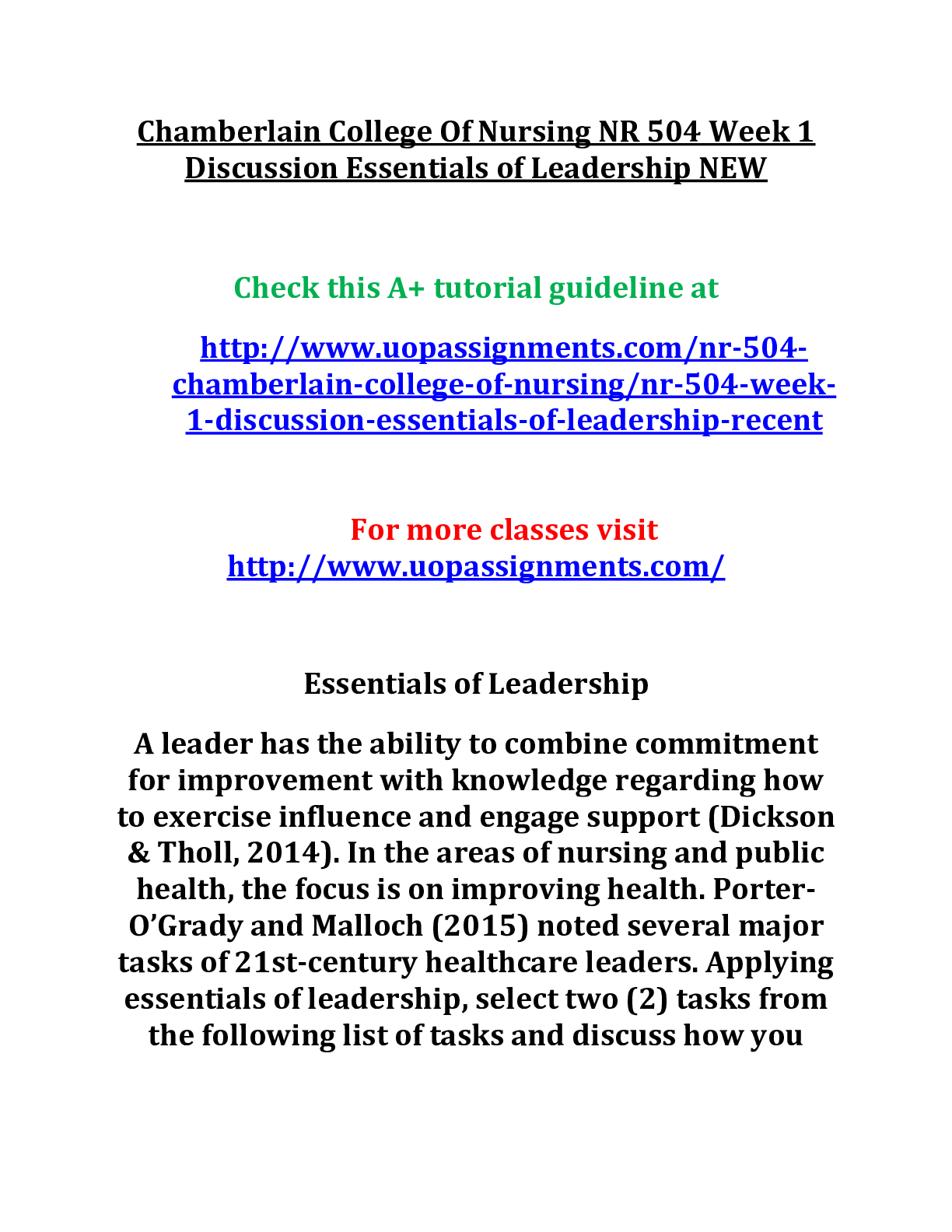
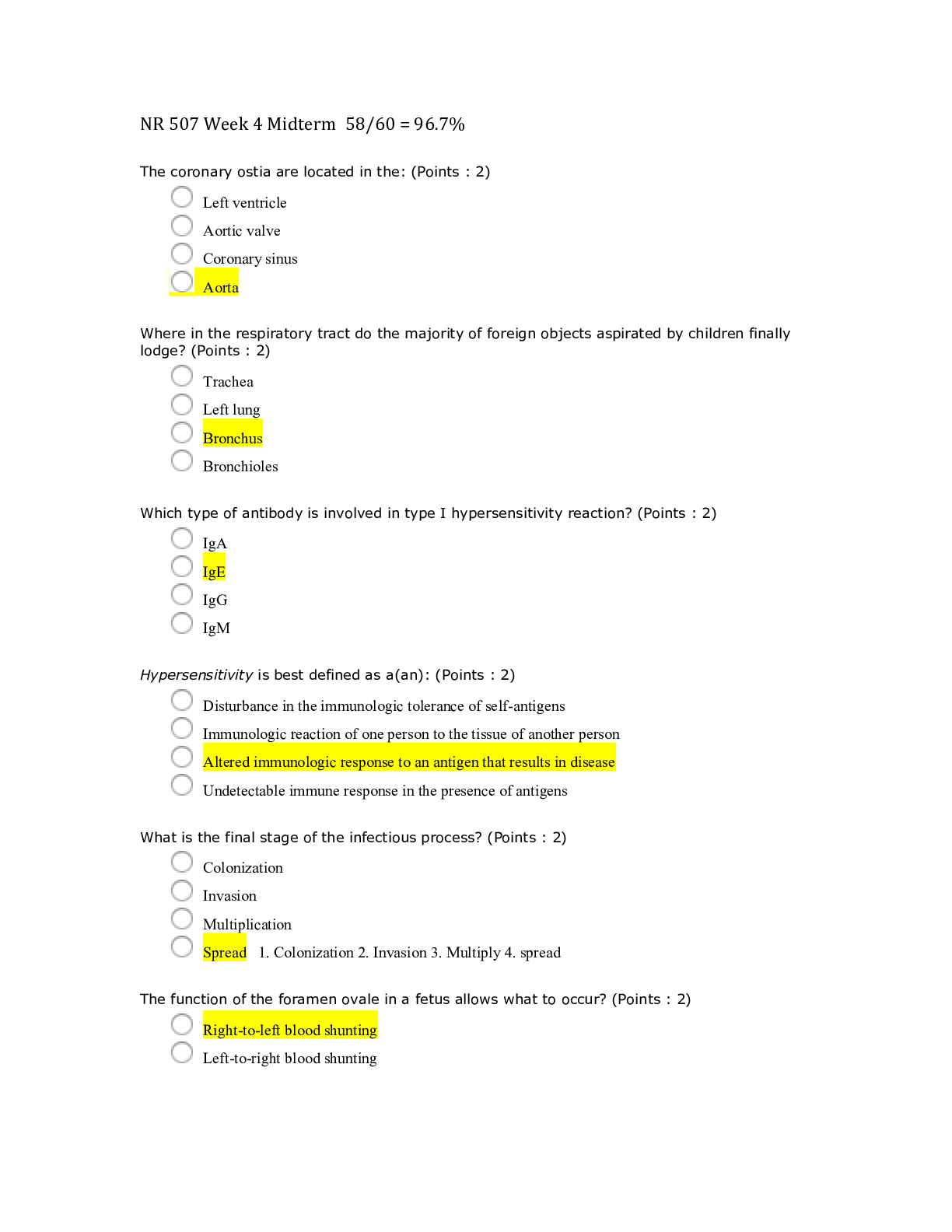
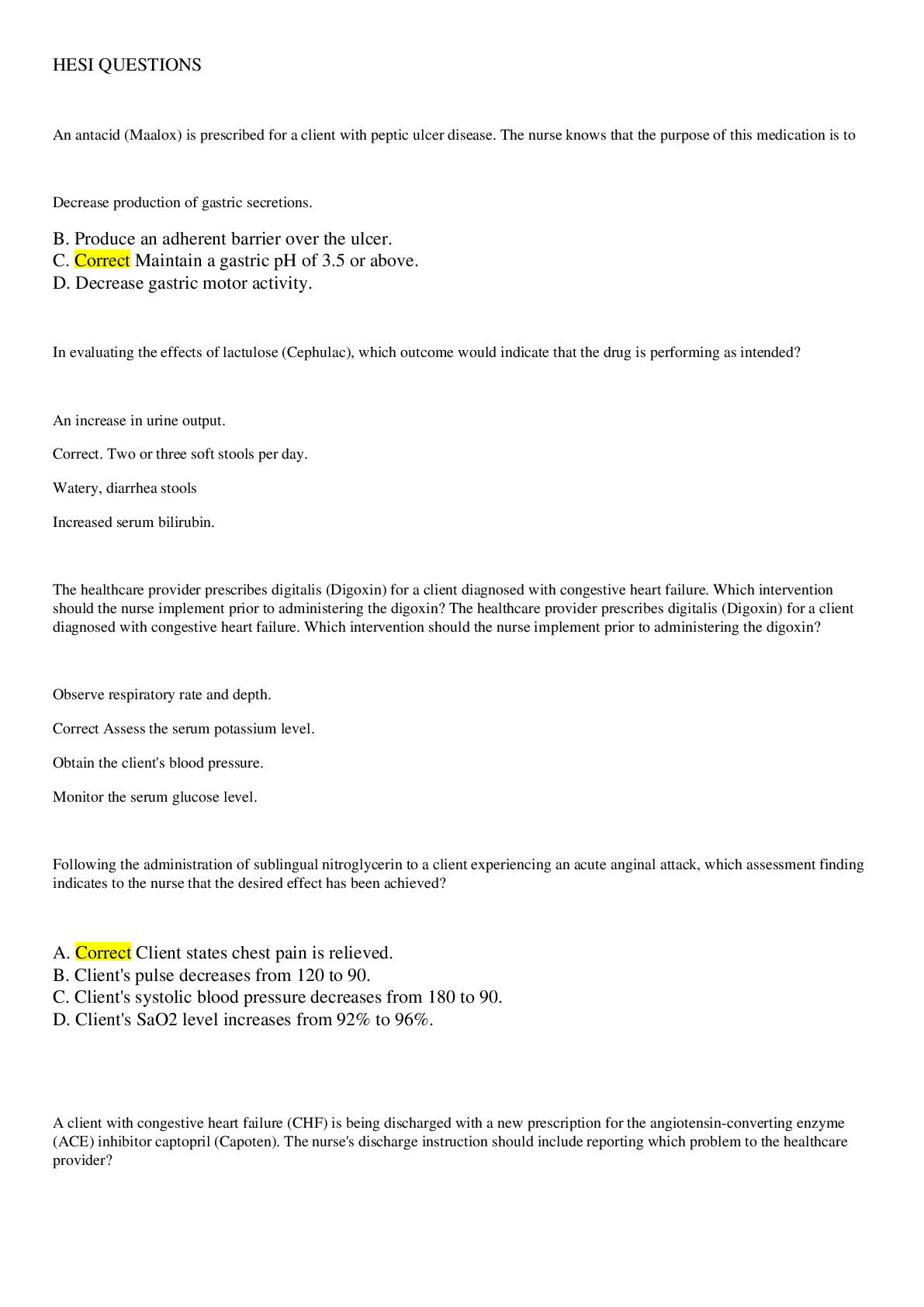
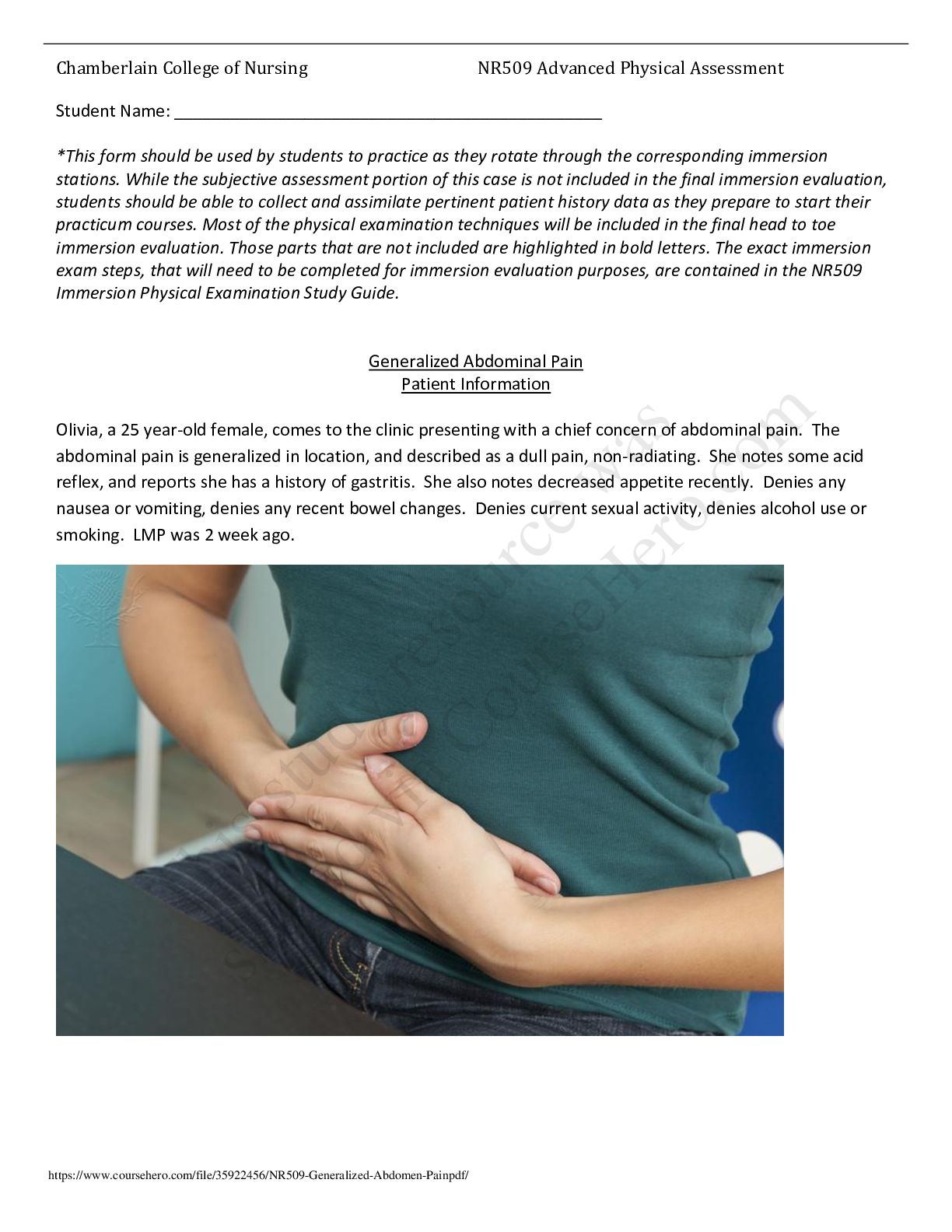
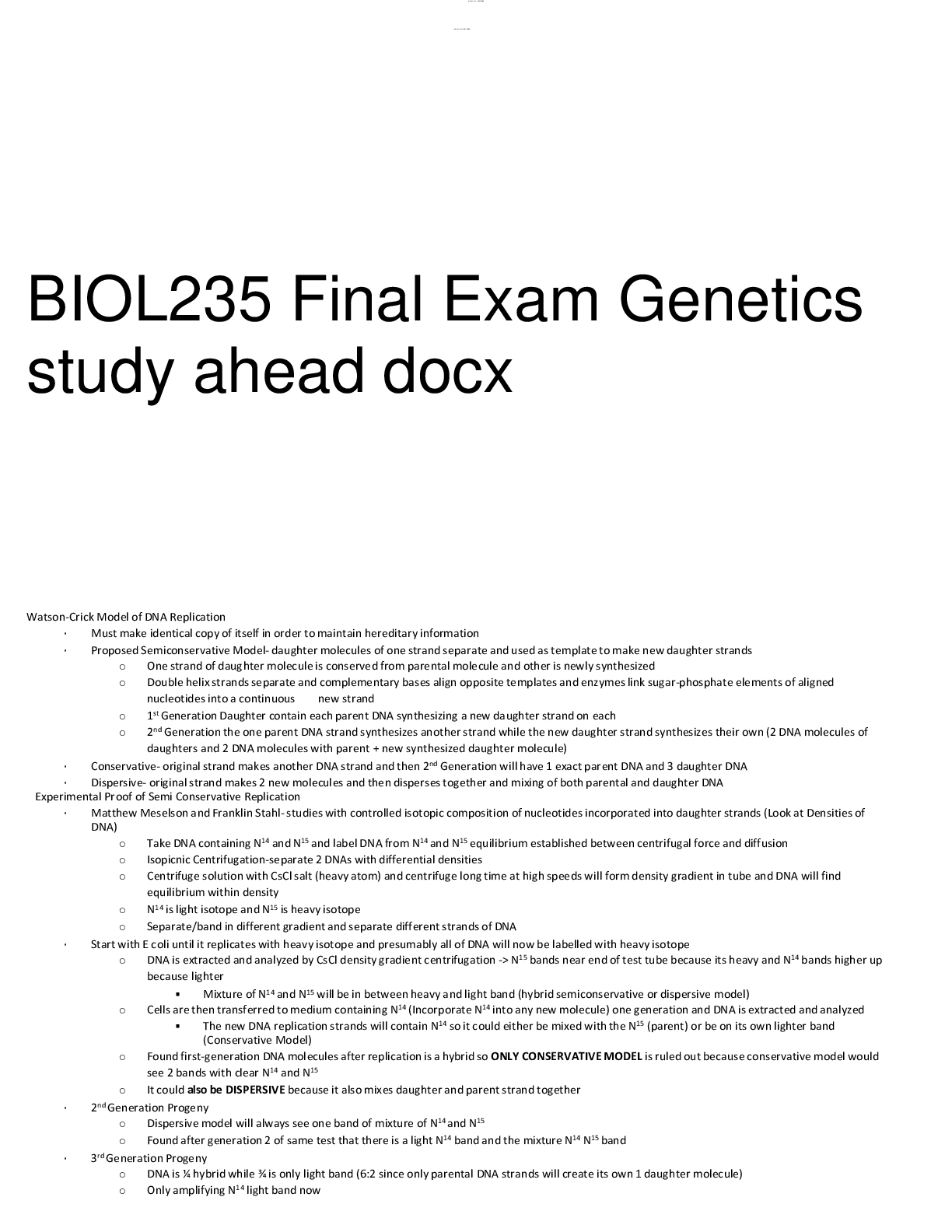
.png)
.png)

.png)
.png)
 nr451 rn Capstone Course.png)
